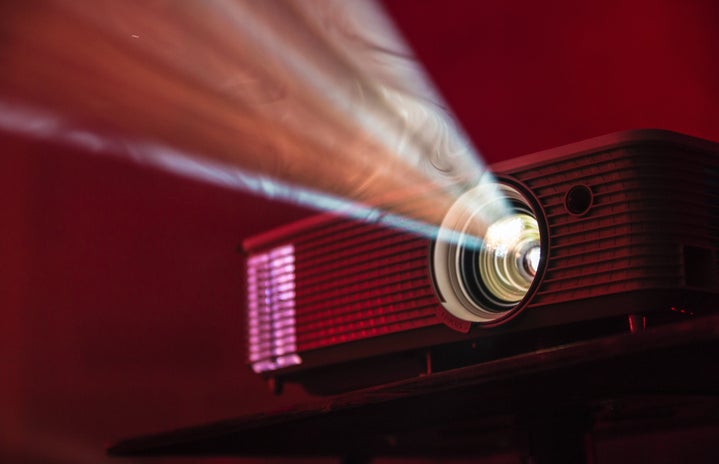Anime tropes have been around since the beginning of the medium, and many are specific to different genres, especially, in relation to the characters and the physical settings of an episode or series. Anime is known for their many interesting genres, but the ones I’m going to be focusing on are: romance, Shonen, Isekai, and psychological. Romance anime shows sweet, comedic moments that focuses on romantic relationships and the blossoming love between the two main characters. Shonen anime are action-filled and target more to a young male audience. Isekai anime show the main character being transported in to another world or dimension. Finally, psychological anime delve into how the mind works, and often discusses psychological and philosophical concepts.
Tropes in romance anime include lots of interactions of character meeting on the rooftops of schools, tsundere characters, and festivals with fireworks. In anime such as Fruits Basket and Maid-sama, the two love interests are usually seen talking on home and school roof tops. When a character is a tsundere, it means that character secretly likes the other character but acts like they don’t. In many cases a tsundere knows that they have feelings another character but refuses to acknowledge them and feels embarrassed by their own feelings. This is usually seen as a tsundere acting cold towards their love interest. Examples of tsundere characters in romance anime like Toradora! and Maid-sama. In Toradora! the main female character is known for her cutesy appearance but harsh personality, which gives her the nickname “the palmtop tiger”. In Maid-sama, the main character is one of the first girls attending a previously all boys school, where she has become the student body president and rules over the school in a strict manner. Her secret is that she works at a maid café and the main male character finds out and annoys her about it over the course of the series. Another trope is festivals and fireworks, in Monthly Girls’ Nozaki-kun, the main female character, tries to profess her love for the main male character during the festival, but he ends up not hearing her because of the loud noise of the fireworks. In Maid-sama the two main characters admit their feelings for each other during the fireworks. In A Silent Voice the two main characters look up at the fireworks together and in Into the Forest of Fireflies’ Light the couple’s last moments together are during a festival. The festivals shown in anime usually occur at the beginning of spring, the end of summer, or to celebrate the new year.
Since Shonen anime includes lots of action with multiple ongoing story arcs, they have the largest number of episodes. They all have character’s who announce every attack they do or have names for all their different attacks; and at least one-story arc includes a tournament. Hunter X Hunter has 148 episodes, Black Clover has 119 episodes, One Piece has 919 episodes, and Fairy Tail has 328 episodes. Three story arcs in Hunter X Hunter include a competition of some sort: Hunter Exam Arc (characters compete to get their hunter license), Heaven’s Arena Arc (characters compete in order to get stronger), and Green Island Arc (characters compete in a game that was called Green Island). The first story arc in Black Clover show the competitiveness between the two main characters along with them competing to be in a Magic Knight Squad. In Black Clover, the characters always say the name of their attack before completing it, for example, one of the main character’s uses wind magic and some of the names of the different moves are: “Towering Tornado”, “Crescent Kamaitachi”, “Tornado Fang”, and “Gale White Bow”. In Fairy Tail, one of the main characters uses fire dragon magic and some of the names of the different moves are: “Fire Dragon’s Roar”, “Fire Dragon’s Claw”, “Fire Dragon’s Iron Fist”, and “Fire Dragon’s Roasting Bath”. One of the most common examples of characters voicing their attacks is in the Dragon Ball franchise. For instance, Goku’s signature attack is “Kamehameha”, his energy attack.
The term NEET (someone who is basically doing nothing with their life, not in education, employment, or training) originated from England and spread to multiple Asian countries, such as Japan. The birth of NEETS came from higher unemployment rate among the younger generation (ages 25 to 34) during the economic stagnation that occurred in the 1990s. Two major tropes in Isekai anime are that the protagonists that are uninspired with life, or unapathetic about everything, and are actually geniuses. The main characters are always great at whatever activity they do, examples include No Game No Life and Problem Children are Coming from Another World, aren’t they? No Game No Life follows the story of NEET siblings who get inspired by a world centered around games, meaning that every conflict, competition, or agreement is made through playing a game where each player wages something of equal value. In the anime the siblings win the competition to be King and rule the world of games, hoping to defeat the god of games (the creator of the world/the person who sent them there). In Problem Children are Coming from Another World, three teenagers are summoned as heroes to help save a community in that world. Each character has an easily controllable magical ability that makes them strong, but none of them are too serious about helping. One character is known for his arrogance and the other for her rich girl attitude. At the beginning of the series they seem to have no interest in the world around them.
In psychological anime, some tropes include pain, suffering, extra appendages, cannibalism and the idea of what it means to be human and human morality. My holy trinity of psychological anime include Tokyo Ghoul, Attack on Titan, and Parasyte. In Tokyo Ghoul, the main character’s human organs are replaced by a ghoul’s, thus turning him into a ghoul. In Attack on Titan, the main character’s father injects him with serum that turns him into a titan. And in Parasyte, an alien creature (the parasite) imbeds himself into the hand of the main character. These anime go over what it truly means to me human by turning the main characters into the “monsters”. In all three, anime the ghouls, titans, and parasytes all eat humans, which is why they’re seen as monsters; however, it is also shown that not all ghouls, titans, or parasytes are evil, which contradicts how each character’s societies perceive them. This creates the question in who the real monsters are: Humans? Ghouls? Titans? Parasytes?


